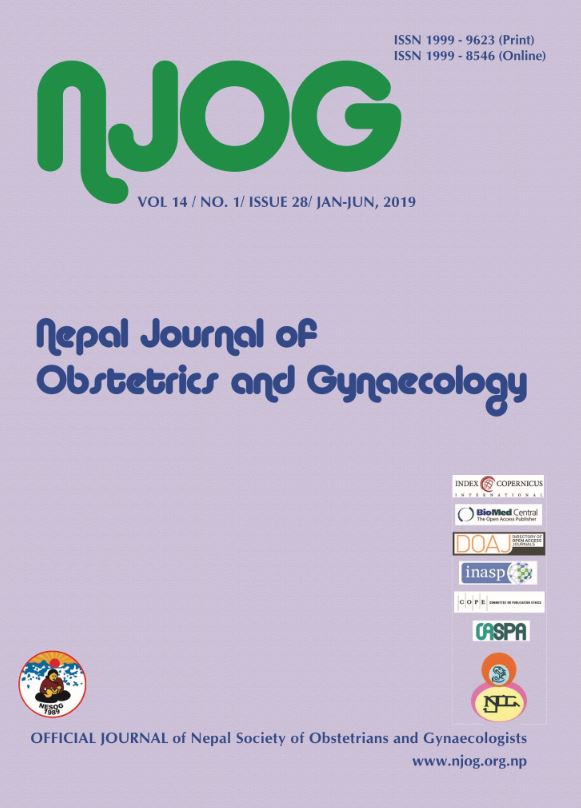Histopathological patterns of benign lesions in hysterectomy specimens
Abstract
Aims: To audit and evaluate the surgical indications, routes of surgery and types of hysterectomies performed along with histopathological analysis of those hysterectomies in respect to disease of endometrium, myometrium, cervix and fallopian tubes and ovaries for benign conditions.
Methods: This is retrospective cross sectional study of all hysterectomy specimens received in the department of Pathology, B and C teaching hospital and research center, Jhapa, Birtamode, Nepal from May 2017 to May 2019. Clinical details were received from the data provided by gynecologists in histopathological requisition forms. Only specimens received for the benign indication for hysterectomy were taken.
Results: Out of 115 specimens, the number was equal on both abdominal and vaginal route. The common indications were leiomyoma (60%, n=69), abnormal uterine bleeding (24%, n=28) and uterine prolapsed in 11% (n=13). Uterovaginal prolapse was seen commonest indication for hysterectomy in age group of 5th and 6th decade of life. Myometrial pathology was seen in 74% (n=75) comprising mostly of leiomyoma. Endometrial pathology was present in 14% (n=16) and chronic non-specific cervicitis in 24% (n=28). Abnormal tubo-ovarian pathology was found in 40% (n=51).
Conclusions: Leiomyoma, abnormal uterine bleding and uterovaginal prolapsed are the common benign conditions undergoing hysterectomy.
Downloads
Downloads
Published
How to Cite
Issue
Section
License
Copyright on any research article in the Nepal Journal of Obstetrics and Gynaecology is retained by the author(s).
The authors grant the Nepal Journal of Obstetrics and Gynaecology a license to publish the article and identify itself as the original publisher.
Articles in the Nepal Journal of Obstetrics and Gynaecology are Open Access articles published under the Creative Commons CC BY-NC License (https://creativecommons.org/licenses/by-nc/4.0/)
This license permits use, distribution and reproduction in any medium, provided the original work is properly cited, and it is not used for commercial purposes.



